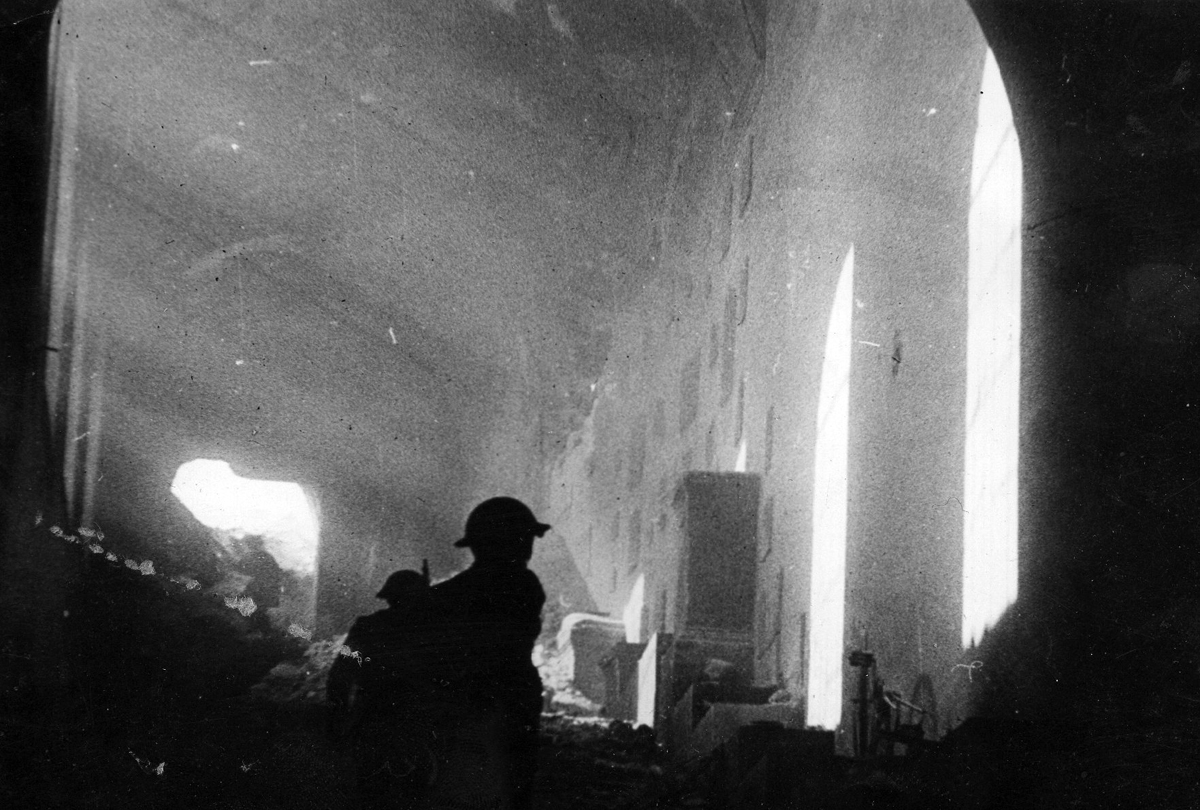Our Legal Heritage: A Scots divorce and the Battle of Monte Cassino

Polish soldiers inside the ruined Monte Cassino monastery
Pictures of fighting and bombed buildings are a familiar sight from historic photographs. It is unlikely that anyone has paused to consider the effects of war in relation to records. Government Records Offices are not themselves immune from destruction.
What then do documentary records have to do with Roman law and the Battle of Monte Cassino?
In 1947, in the Outer House of the Court of Session, before Lord Bingham (1947 SLT (Notes) 3), the divorce case of D’Allesio was heard. The D’Allesios had married in Cassino on 4th September 1919. Mrs D’Allesio was now petitioning the court for a divorce. Her husband objected, originally, based on the court having no jurisdiction, claiming that he was outside its jurisdiction. This objection was subsequently withdrawn.
The issue was that there was no proof of the marriage having taken place.
The Cassino Records Office (and presumably its contents) had been destroyed in the heavy fighting around Monte Cassino in 1944. The Battle of Monte Cassino (otherwise known as the Battle for Rome) had involved the Allies advancing on Cassino with a number of artillery attacks over several months which ultimately included the destruction of the historic hilltop abbey. By 18 May 1944, allied flags were raised in victory amid the remains of the town of Cassino.
Without the actual record of the D’Allesio marriage, an alternative means of proof was needed for the court. It utilised Roman law. The process known as mancipatio was used to effect the transfer of property. That involved a ceremony requiring five adult male witnesses and a man holding a pair of scales, who was referred to as a libripens, for the transaction to take place. The procedure was abolished by Justinian. It was revived in a form for the purposes of the divorce action.
To prove the marriage, the wife relied on an instrument in Italian issued by the Cassino registrar. It stated that all its marriage records had been destroyed during the war. It also included the depositions of five (and it does not say what gender) witnesses confirming that the parties had indeed been married at Cassino on 4th September 1919. It included an English translation. There was also produced an admission on record produced to the court that the wedding had taken place. The various birth certificates of the children who were born in this country were provided which acknowledged and confirmed the date and place of their parents’ wedding.
The observation then made was to “how ancient customs persist” with the linkage between Scots law and Roman law fully acknowledged. However it does not go on to outline who devised this as the means of providing the best evidence.
However, it records that the divorce was indeed granted.










